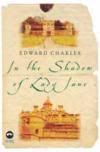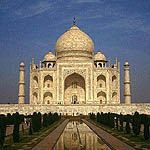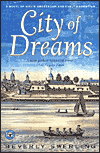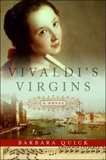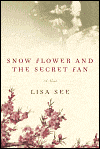
We are very excited to have an interview with Susan Higginbotham here. Susan's book, The Traitor's Wife, won the silver award for historical fiction in ForeWord Magazine's 2005 Book of the Year Awards, and she has an Amazon short available to those in the US called
The Justiciar's Wife.
Susan is also a very active blogger, with four blogs on the go! She is part of a group of historical fiction authors who blog at
Yesterday Revisited, and then she also blogs at
Plenty About Plaidy (about Jean Plaidy), about Richard III at
Unromantic Richard III and then there is her
personal blog.
What attracted you to write about the particular characters or period of history featured in your book?
I had read Christopher Marlowe's play Edward the Second years ago in graduate school and had liked it well enough, but one day while surfing the Internet, I ran across an online version of the play and re-read it in one sitting. I became fascinated by the historical background to the story and started researching it. As my research became more in depth, I learned about Eleanor de Clare, Edward II's favorite niece and the wife of his very powerful and very hated favorite, Hugh le Despenser. Soon I was looking for everything I could find out about her, and as I did, I realized that her story was made for a novel. So I wrote it.
If you had to change from writing HF, what genre would you like to give a go?Probably popular history. There are so many great stories out there that are waiting to be told, one way or another.
Are you working on another book now? Will you continue to write about this same period/character or a different period?I'm working on a novel featuring Eleanor's oldest son, Hugh, and his wife. It's rather different from The Traitor's Wife, though—it focuses more on the love story between the two main characters than on the historical events of the time, since Hugh, very wisely in light of his family history, served his king on the battlefield rather than as a courtier. The Hundred Years War and the Black Death, however, do play an important role in the story. After that, I've been pondering the idea of a novel set during the Wars of the Roses. I've read so many historical novels where Richard III is a virtual saint, I'd love to write one where he isn't the good guy for a change--or at least where he isn't so romanticized.
How did you get into writing?I've been writing since I was a small girl, beginning with stories about my kitty cats and never stopping except for a hiatus when I was in law school.
What comes first, the story idea or the characters?The characters, for me—I find someone who intrigues me and who I want to write more about. Since I prefer to write about historical figures, the plot is pretty much ready-made, with just some gaps to be filled in.
What is the one thing that you couldn't live without while you were writing and why? My computer. I can no longer write in longhand—it's as if my whole brain shuts down when I try.
Every review I have read is really positive about your book. How hard is it to drum up excitement and sales? How has self publishing benefited you and how has it hindered?It's been a challenge! Since I knew that most of my sales would have to come from the Internet, one thing I did was to build a website that had a lot of historical information in it, one that would draw in people interested in fourteenth-century England. And Amazon, fortunately, has a lot of free features that help with marketing--Search Inside the book, Amazon lists, etc.
There's a misconception, one that's regularly repeated online, that people who self-publish do so only to see their name in print and to hold a printed book in their hands. That's nonsense. We self-publish for precisely the same reason that other authors publish--to get readers. Self-publishing got me readers where otherwise my manuscript might still be sitting in some agent's or publisher's slush pile, and I've been pleased with the results so far. There have been negatives, of course--most brick-and-mortar bookstores won't handle self-published books, and there are always going to be people who refuse to even look inside a self-published book because they "know" it's going to be bad--but they're outweighed by the knowledge that people are reading the book and enjoying it. So to you folks who have taken or will take a chance on a self-published book by an unknown author, thank you!
Will you go the self published route for your next book?Probably, yes, because it's a little short for a straight historical novel. (I thought of changing the focus to add some word count, but wasn't happy with the direction in which that would have taken it.) Or I may just sell it in installments on Amazon Shorts. I think with the third novel I may try to go the traditional route, though.
And thank you, ladies, for the opportunity to appear here!






